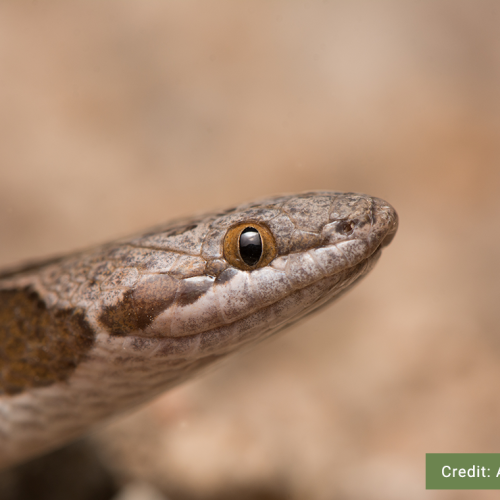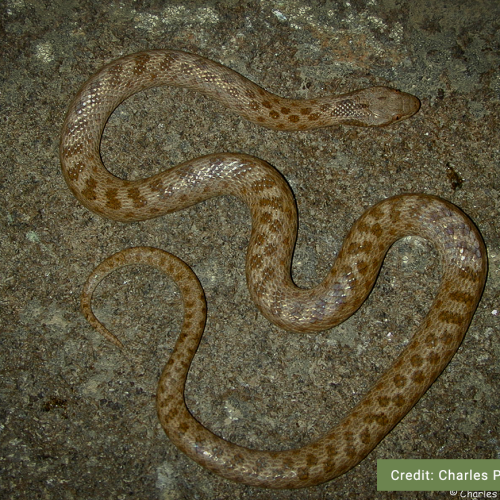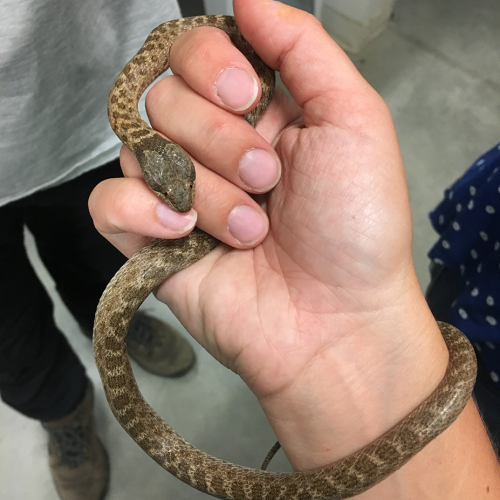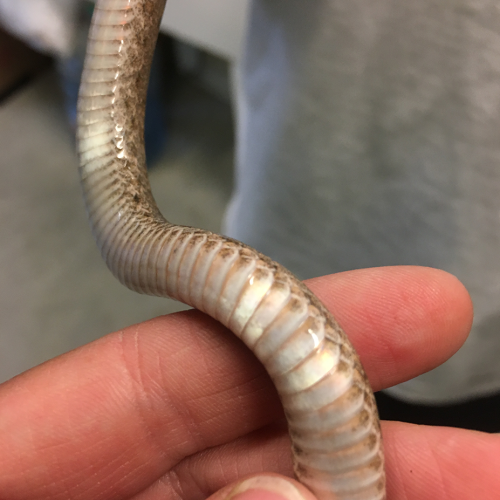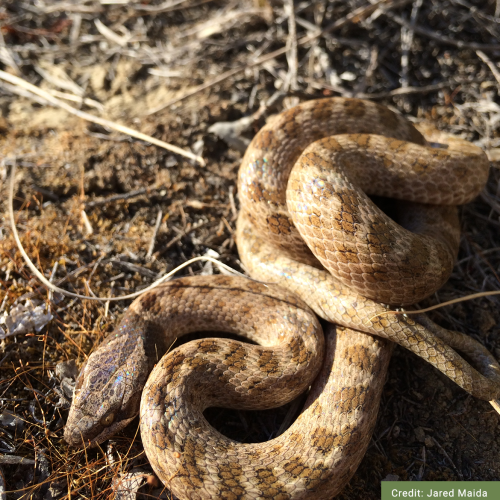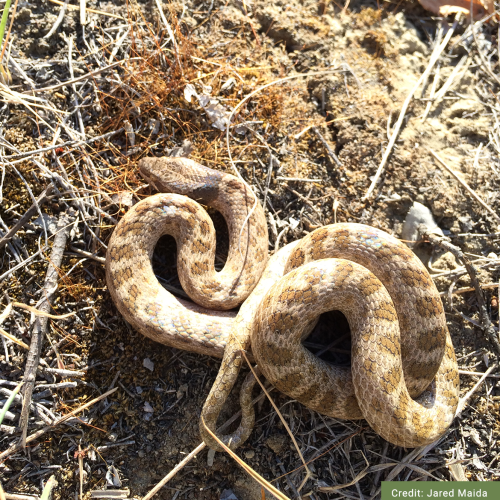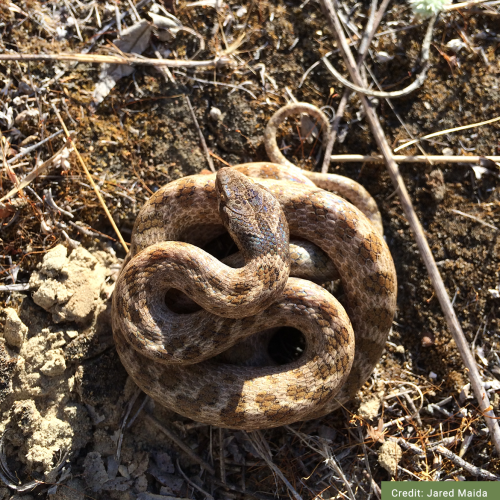Credit: Charles R. Peterson
Desert Nightsnake
Hypsiglena chlorophaea deserticola
Description
Listen to the Indigenous words for “snake” here!
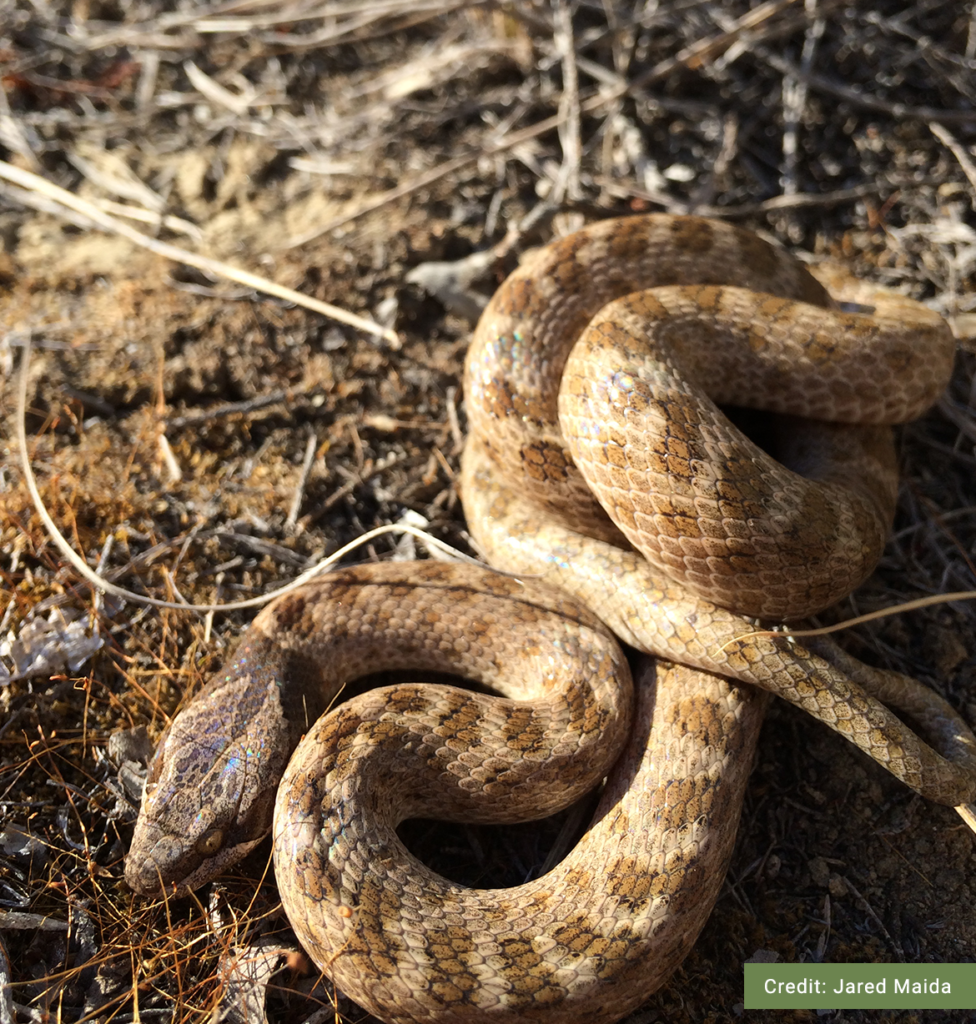
Similar Species
The Desert Nightsnake is very rare in British Columbia, and superficially resembles the Western Rattlesnake and Great Basin Gophersnake. Upon closer inspection, Nightsnakes can be easily differentiated from rattlesnakes with a few characteristics. First, Nightsnakes do not possess a rattle. They also have smaller markings, a less distinct neck, a slimmer head, and smooth scales (as opposed to keeledDefinition:Scales that contain a ridge down the centre that may or may not extend to the tip of the scale.). Night Snakes also have a dark band through each eye and a dark collar-like neck marking that often blends with the eye bands. This neck marking is unique to Nightsnakes in British Columbia and can also be used as an identifier between Nightsnakes and Gophersnakes. Nightsnakes also possess a vertical pupil, like rattlesnakes, whereas Gophersnakes have a round pupil.
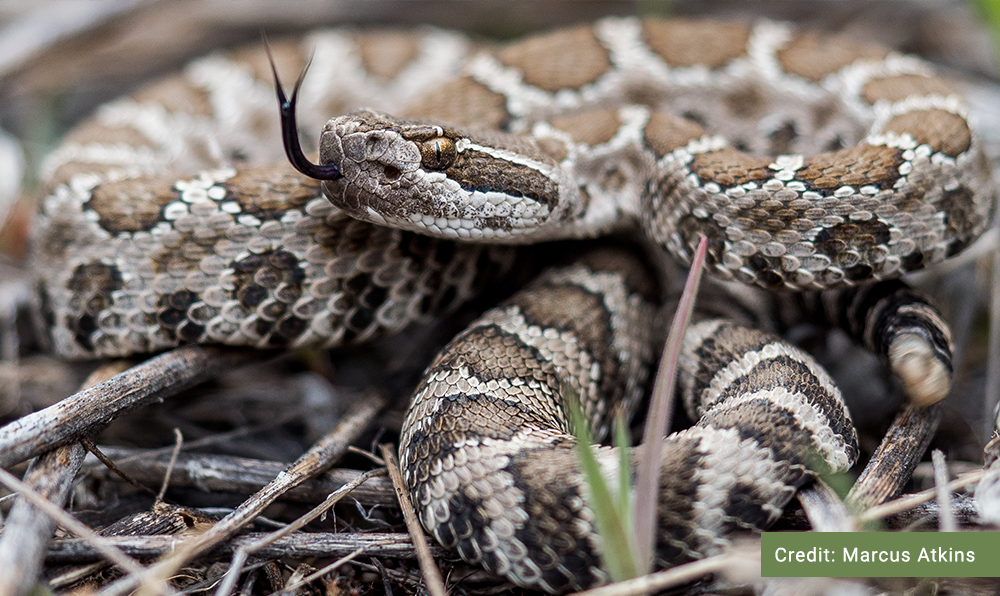
Western Rattlesnake
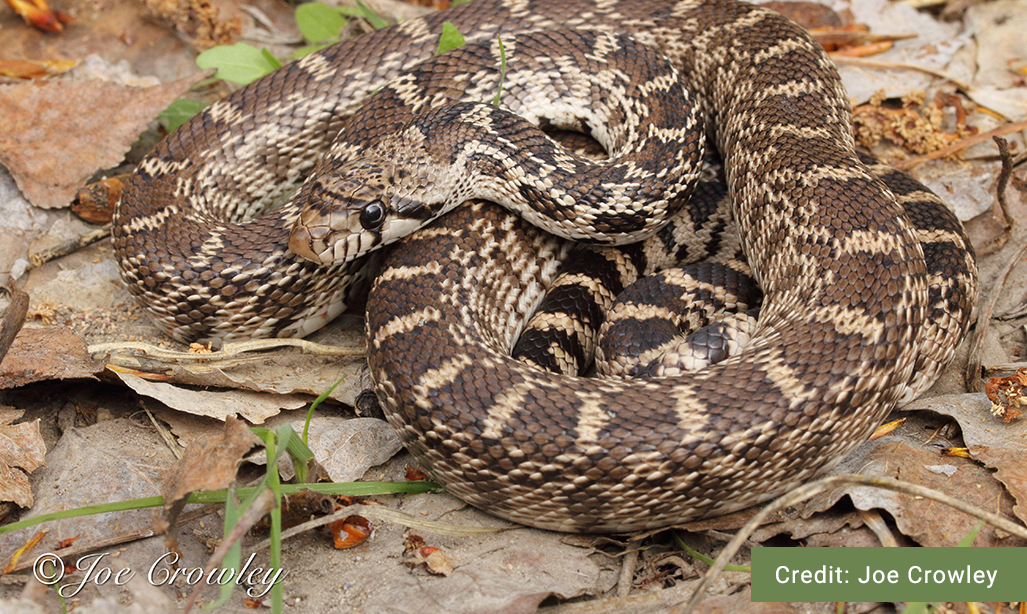
Great Basin Gophersnake
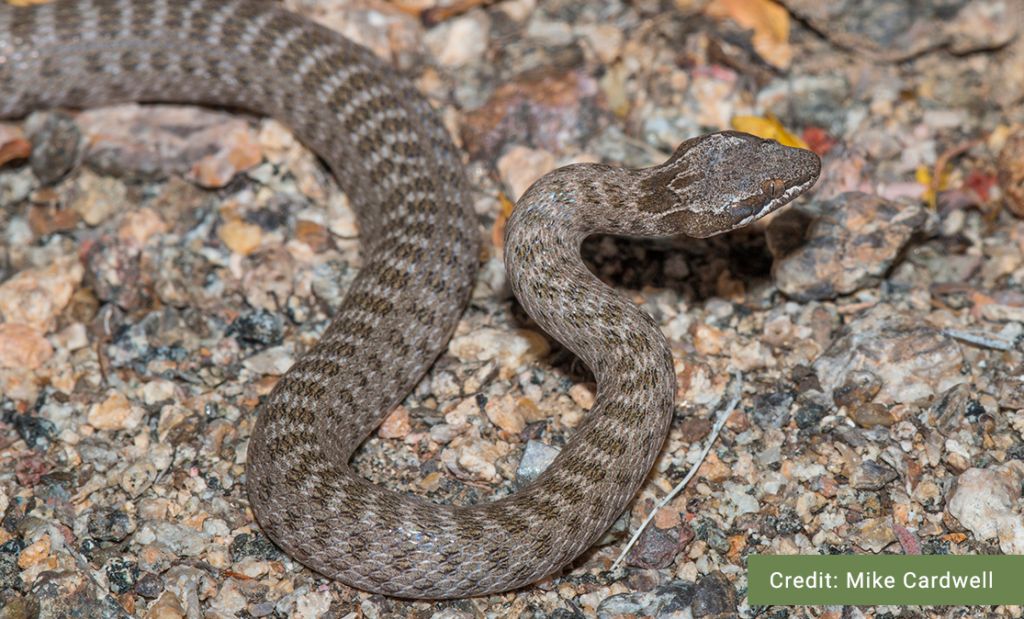
Desert Nightsnake
Distribution
Habitat
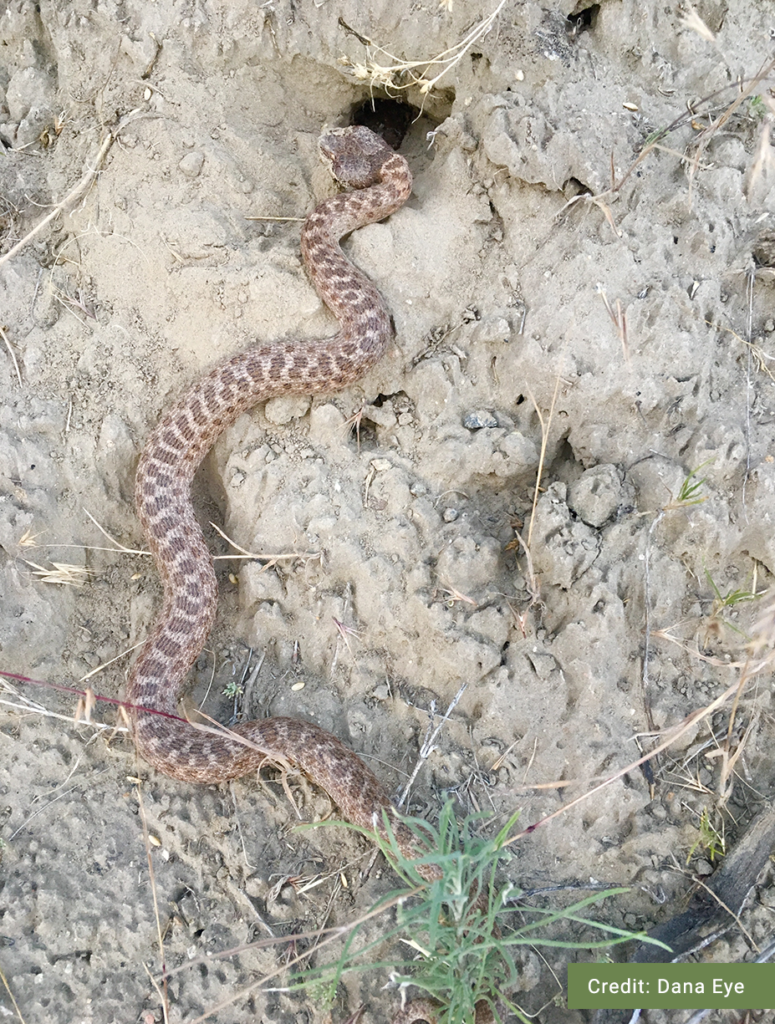
Reproduction
Next to nothing is known about the life history of Desert Nightsnakes in British Columbia, and there is little information for them in the United States. Night Snakes are oviparousDefinition:A reproductive strategy where the female lays eggs that develop outside of the mother’s body. and will lay 3 – 6 eggs in late spring or early summer. Nest sites have never been observed in British Columbia, but eggs are likely to be laid on south-facing slopes with adequate cover. The age of sexual maturity and longevity is not known, but it is assumed that these snakes live for 5 – 10 years.

Diet
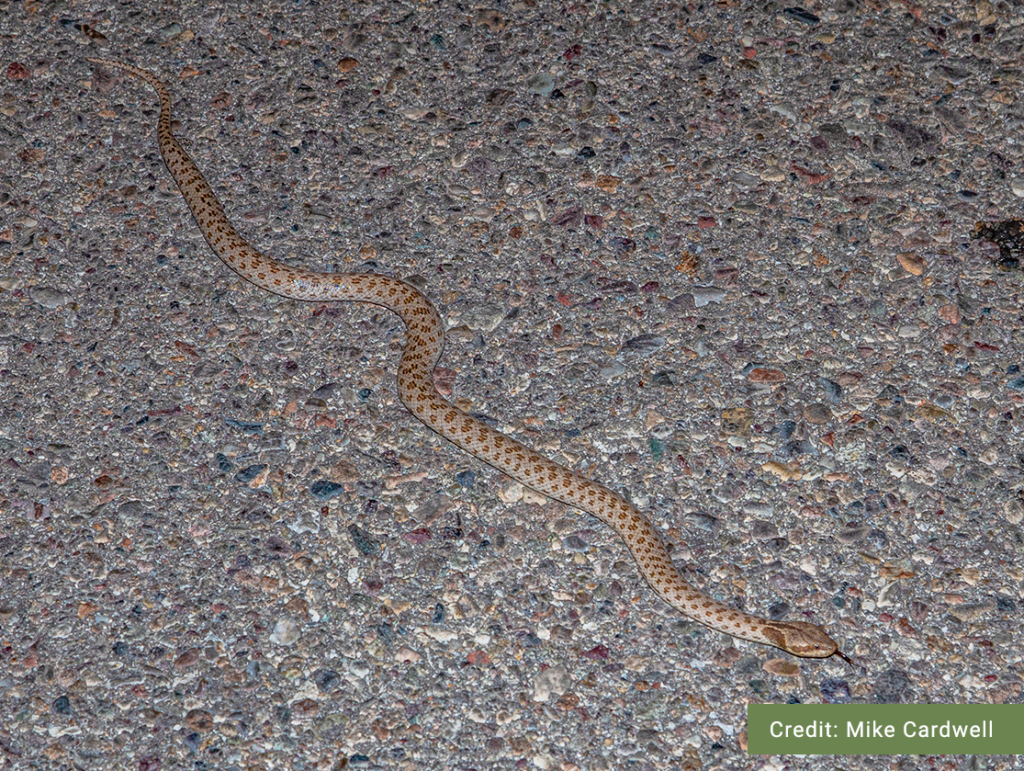
Conservation Status
Global: G5 (2016)
COSEWIC: E
SARA:1-E (2003)
Provincial: S2 (2018)
BC List: Red
Learn more about conservation status rankings here
Threats
Little is known about the range, habitat, or behaviour of Desert Nightsnakes in B.C. If you see a Desert Nightsnake, please submit an observation report to the Ministry of Environment and Climate Change.

Did You Know?
Species Account Author: Marcus Atkins
B.C. Conservation Data Centre. 2009. Species Summary: Hypsiglena chlorophaea. B.C. Minist. of Environment. Available: https://a100.gov.bc.ca/pub/eswp/ (accessed Jun 16, 2021).
B.C. Conservation Data Centre. 2018. Conservation Status Report: Hypsiglena chlorophaea. B.C. Minist. of Environment. Available: https://a100.gov.bc.ca/pub/eswp/ (accessed Jun 16, 2021).
B.C. Conservation Data Centre. 2021. BC Species and Ecosystems Explorer. B.C. Minist. of Environ. Victoria, B.C. Available: https://a100.gov.bc.ca/pub/eswp/ (accessed Jun 16, 2021).
COSEWIC. 2011g. COSEWIC status appraisal summary on the Desert Nightsnake Hypsiglena chlorophaea in Canada. Committee on the Status of Endangered Wildlife in Canada. Ottawa. xiii pp.
Environment and Climate Change Canada. 2019e. Recovery Strategy for the Western Rattlesnake (Crotalus oreganus), the Great Basin Gophersnake (Pituophis catenifer deserticola) and the Desert Nightsnake (Hypsiglena chlorophaea) in Canada. Species at Risk Act Recovery Strategy Series. Environment and Climate Change Canada, Ottawa. Part 1, 28 pp., Part 2, A. 37 pp., B. 36 pp., C. 28 pp.
Goldberg, S.R. 2001. Reproduction in the Night Snake, Hypsiglena torquata (Serpentes: Colubridae), from Arizona. Texas J. Sci. 53(2): 107-114.
Lacey, H., C.H. Shewchuck, P.T. Gregory, M.J. Sarell, and L.P. Gregory. 1996. The occurrence of the Night Snake, Hypsiglena torquata, in British Columbia, with comments on its bodysize and diet. Can. Field-Nat. 110:620-625.
Southern Interior Reptile and Amphibian Working Group. 2016d. Recovery plan for the Desert Nightsnake (Hypsiglena chlorophaea) in British Columbia. Prepared for the B.C. Ministry of Environment, Victoria, BC. 28 pp.
https://www.bcreptiles.ca/snakes/night.htm
http://www.canadianherpetology.ca/species/species_page.html?cname=Desert%20Nightsnake
http://linnet.geog.ubc.ca/efauna/Atlas/Atlas.aspx?sciname=Hypsiglena%20chlorophaea&ilifeform=42


